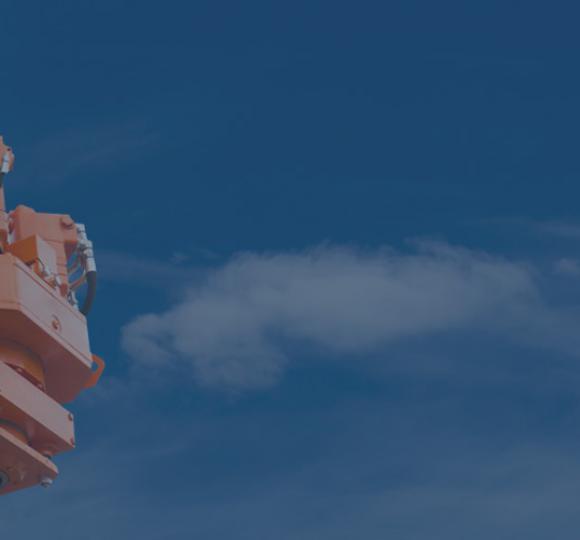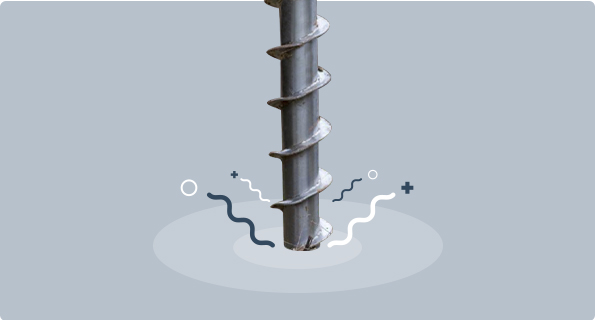Geotechnics
When designing and specifying the assumptions for free-field solar installations, data concerning the soil and other local conditions is of utmost importance.
It allows for the optimisation of construction works, avoiding down-time, reduction of performance during operation or quick installation damaging.
The investigation includes: geological, hydro-geological and soil conditions, soil chemistry conditions, morphological, hydraulic, climatic and sociological conditions in the location.
The survey is concluded by determining the conditions for an enterprise performing construction works from the perspective of the location of solar panels and design of the installation, taking into account the access roads, drainage and terrain.

Probing with a ground rod
The depth of loose clastic rock deposition is determined by a light probe. A rod with a specific tip is driven into the soil, and the depth is measured in relation to the number of strokes.
The specified values and deposition depth provide additional knowledge, complementary to exploratory drilling, allowing for the development of the first concepts of the type and depth of foundations for the supporting construction of the solar panels.

Bore hole detection
Considerations are based on the fact that the parameters determining the load-bearing capacity of the steel piles derive from varying soil structures and their respective different force-bearing capacities. It is, therefore, advisable to pay special attention to the examination of the uppermost 2 to 4 meters of the soil stratum.
Thanks to the measurement methods taken from the assessment of founding depths for noise barriers, adapted to the prerequisites of solar power plants, it is possible to reliably calculate the necessary founding depths for all kinds of steel piles, if the following parameters are known:
- The engineering properties of the ground
- The dimensions and measurements of the pile
- Forces and momenta operating on the piles
Furthermore, the vertical application of force and its transmission into the soil have to be examined, drawing on information about the contact stress between piles and surrounding soil. Usually, the pile seat depths calculated from tilting torques and horizontally operating forces are sufficient for the piles to also bear vertically afflicted loads. On rare occasions (very light soils), however, it is necessary to increase the pile seat depth in order to effectively transmit vertical stress.
The evaluation system is computerised and homologated in accordance with ZTVE LSW88/03. It is based on the norms for permitted encumbrance to the site (DIN/EN 1054).
Trial pile driving
In these trials, a steel pile is driven into the soil that needs to be examined. Next, force is applied to the pile horizontally and vertically in order to measure its reaction above the ground (deformation). Finally, the profile is being pulled from the ground and the force needed for that is measured.
This method provides information on deformations and the impact of different forces affecting the inserted steel pile. However, it provides only limited information about the actual soil structure and its mechanical properties. Ideally, the trial shows that the pile driven into the ground is able to withstand the stress afflicted by the superstructure.
Contact
Feel free to ask us a question